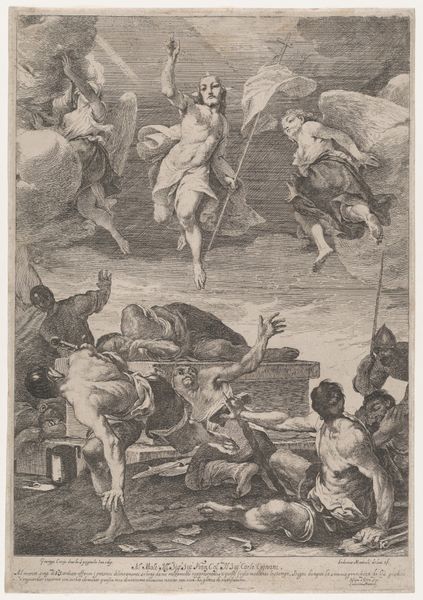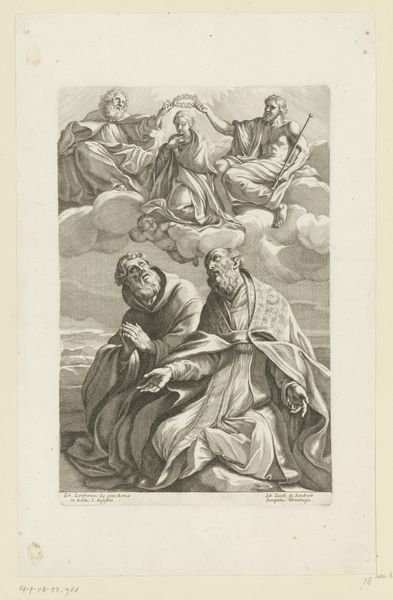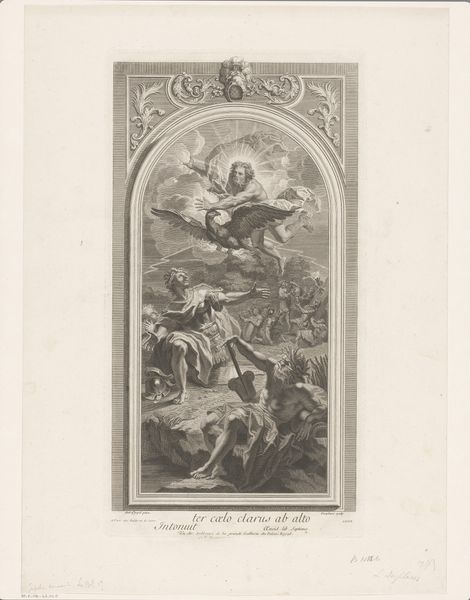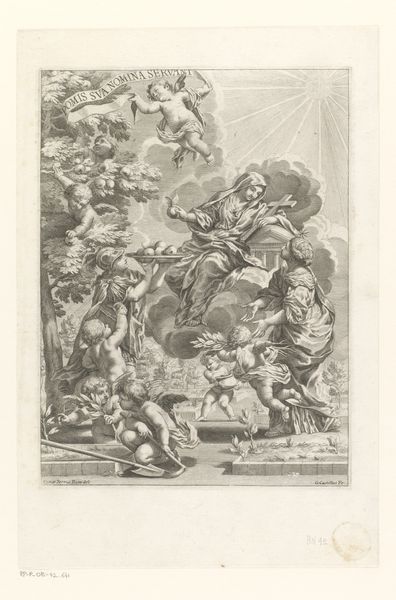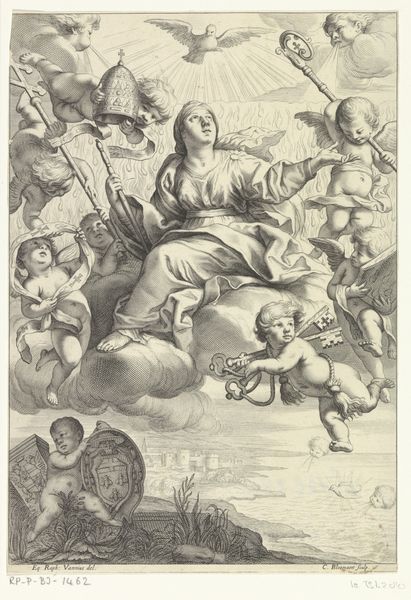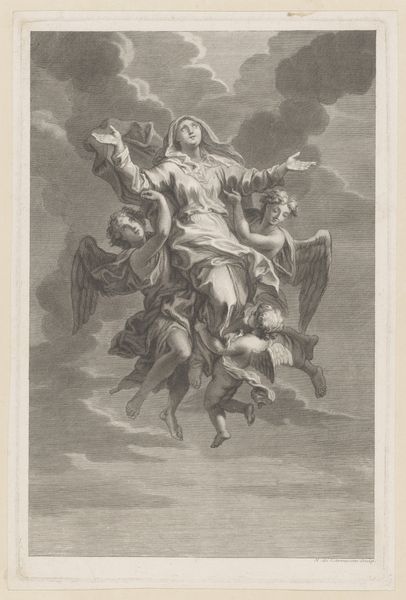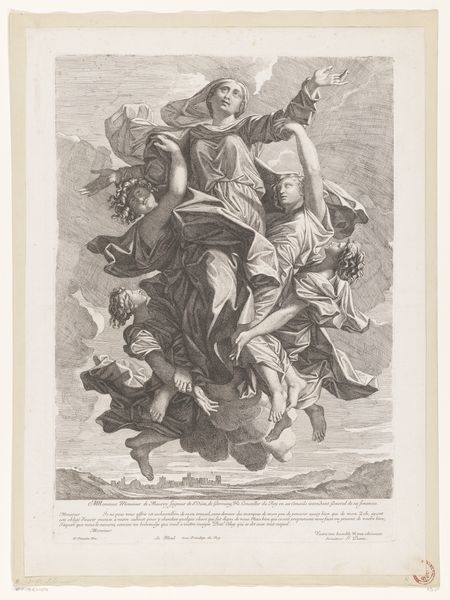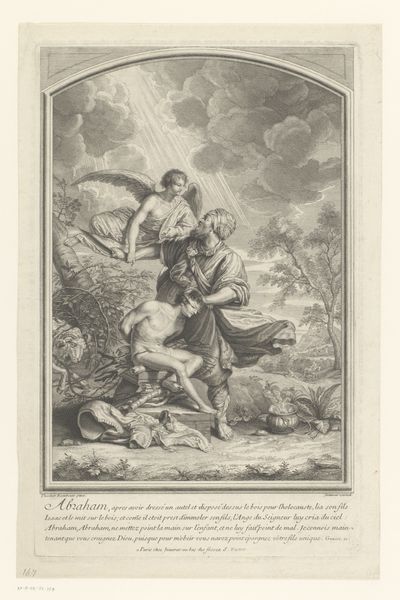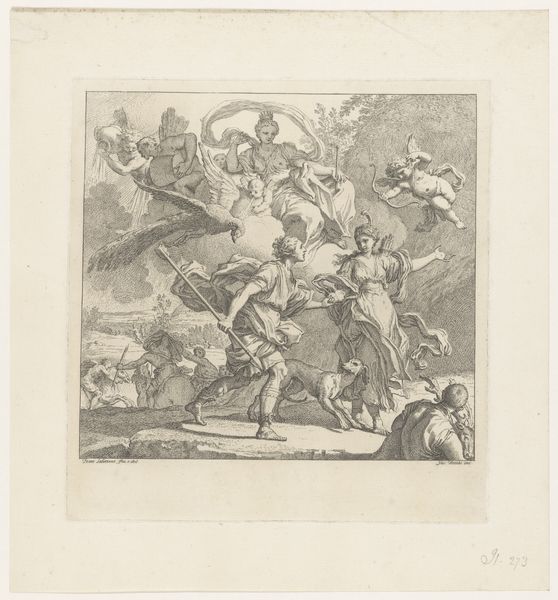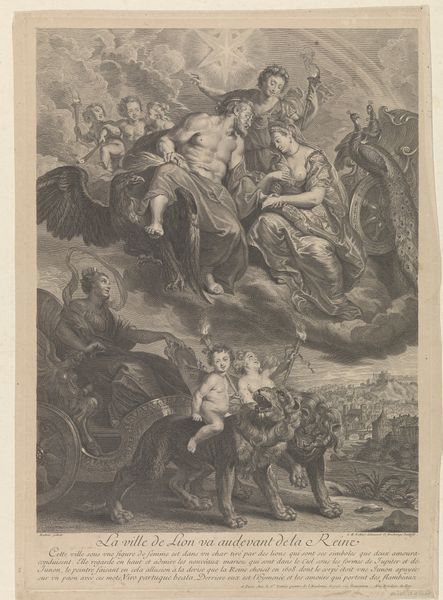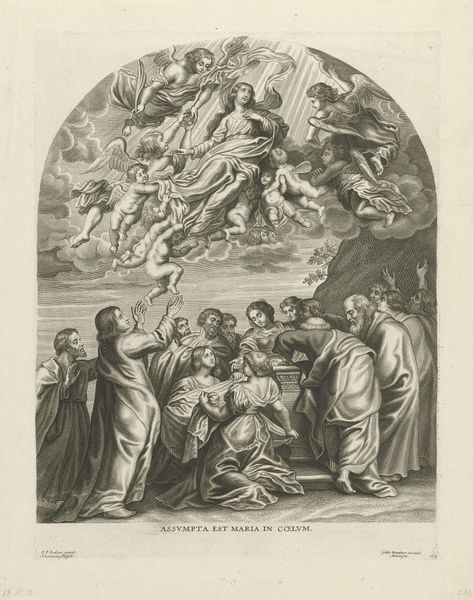
engraving
#
allegory
#
baroque
#
figuration
#
line
#
history-painting
#
engraving
Dimensions: height 317 mm, width 242 mm
Copyright: Rijks Museum: Open Domain
Curator: Here we have "Engelen dragen de heilige Cecilia naar de hemel," or "Angels carrying Saint Cecilia to Heaven," an engraving by François Spierre, made sometime between 1649 and 1681. It's currently held here at the Rijksmuseum. Editor: What immediately strikes me is the overwhelming sense of ascension, but rendered with such detailed line work that it almost feels heavy, anchored. The swirling robes and limbs create this dynamic upward movement, but it is contrasted by this rigid and static line of the engraving style itself. Curator: Indeed. The use of engraving as a medium is critical here. It would have been chosen specifically for its ability to mass produce, making images accessible to a wider audience beyond the wealthy elite who would have purchased paintings. Spierre, though known for his skill, functioned as part of a printmaking shop. His artistry was bound to the mechanics and commerce of image reproduction. Editor: And Cecilia herself becomes an allegorical figure. Her depiction reinforces the Church's own narratives. The engraver disseminates a visual rhetoric about piety, about access to the divine—almost an advertisement for heavenly rewards if one is faithful. Look at the details of their garments—what can it reveal? Curator: That’s insightful. Look closely at the cherubic figures, though—note the ways in which the materials have been articulated: their draperies, the rendering of skin—how labor-intensive the process would have been to produce each print, and how reliant the shop would have been on skilled artisans to execute them faithfully, even with the possibility of subtle variation. Editor: So we’re considering not only the intention, but the implications that this widespread dissemination would have had within broader social and political contexts. Curator: Precisely. In that light, the Baroque style further serves the Church's agenda. It uses grandeur to create emotional response. Baroque, by definition, embraces ornamentation and the spectacular. What do you take away from the allegory tag assigned to this artwork? Editor: It deepens my perception of its message and purpose, extending beyond individual interpretation. As the patron saint of music, St. Cecilia is a powerful figure—representing harmony, beauty, and inspiration but often only recognized in relation to her association to the Catholic Church. So who truly controls that access and representation? Curator: An interesting counterpoint to consider. As we’ve observed, even the act of engraving, in its technical and industrial means, contributed to that complex and, perhaps, intentional interplay.
Comments
No comments
Be the first to comment and join the conversation on the ultimate creative platform.
